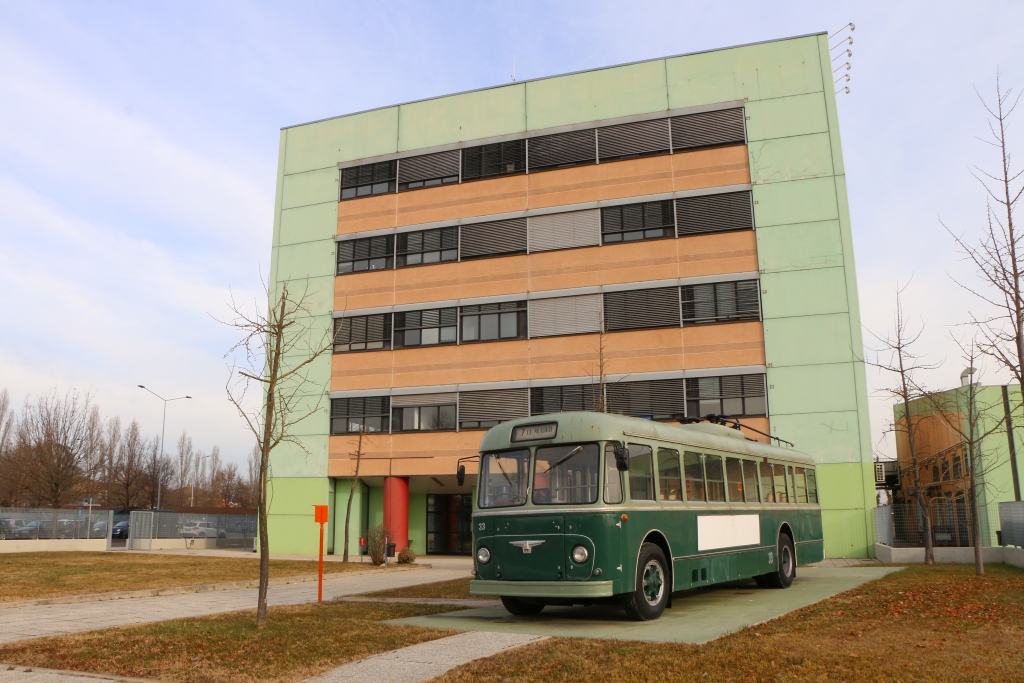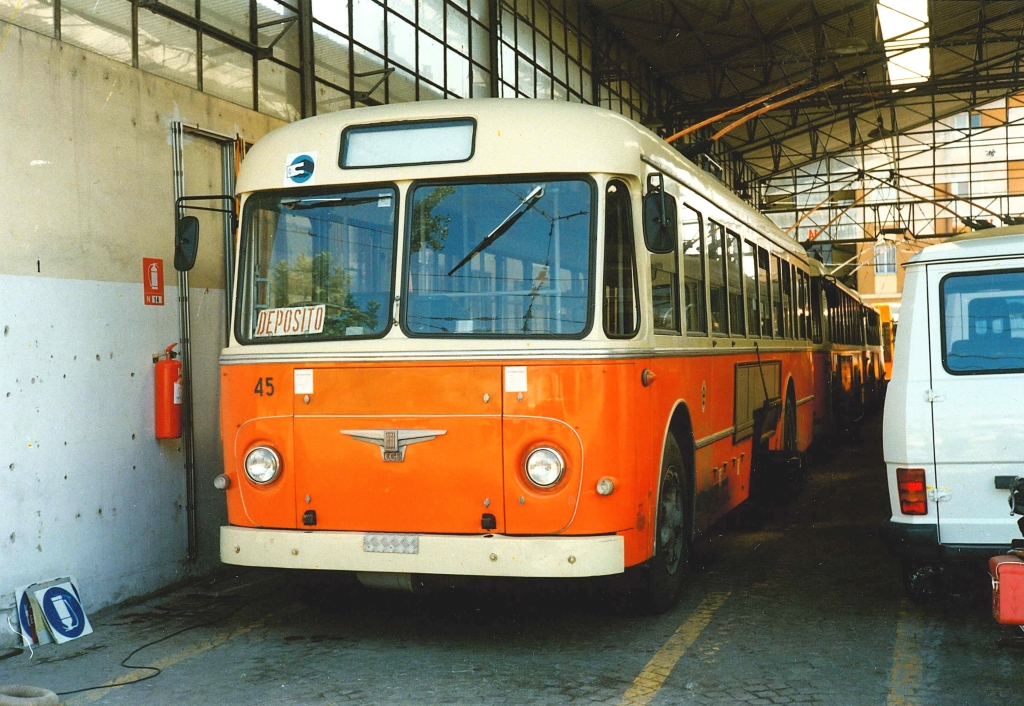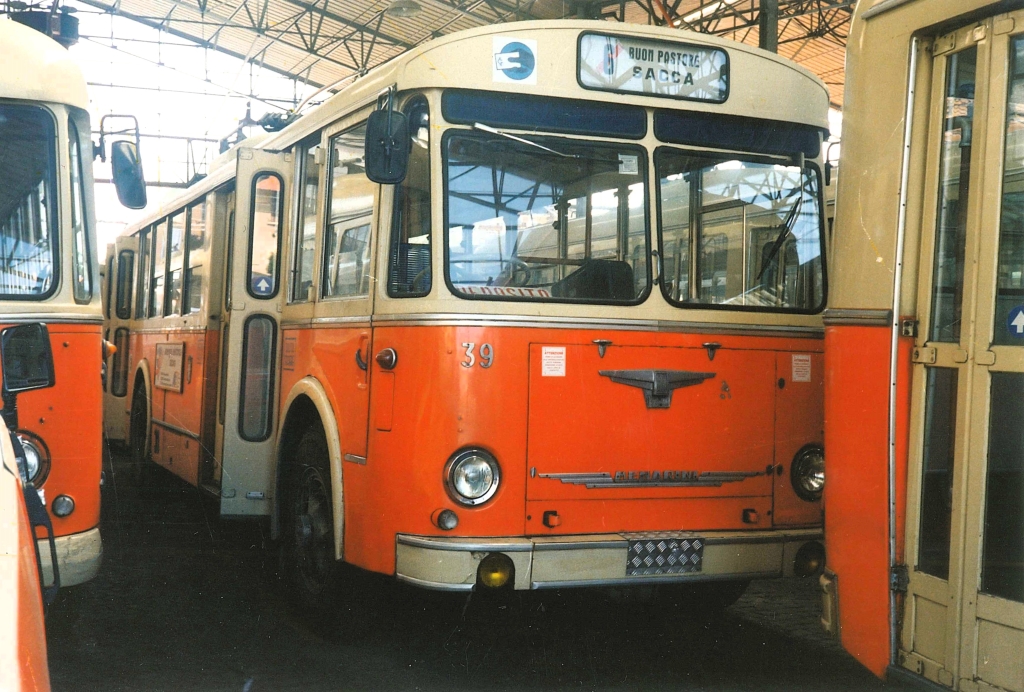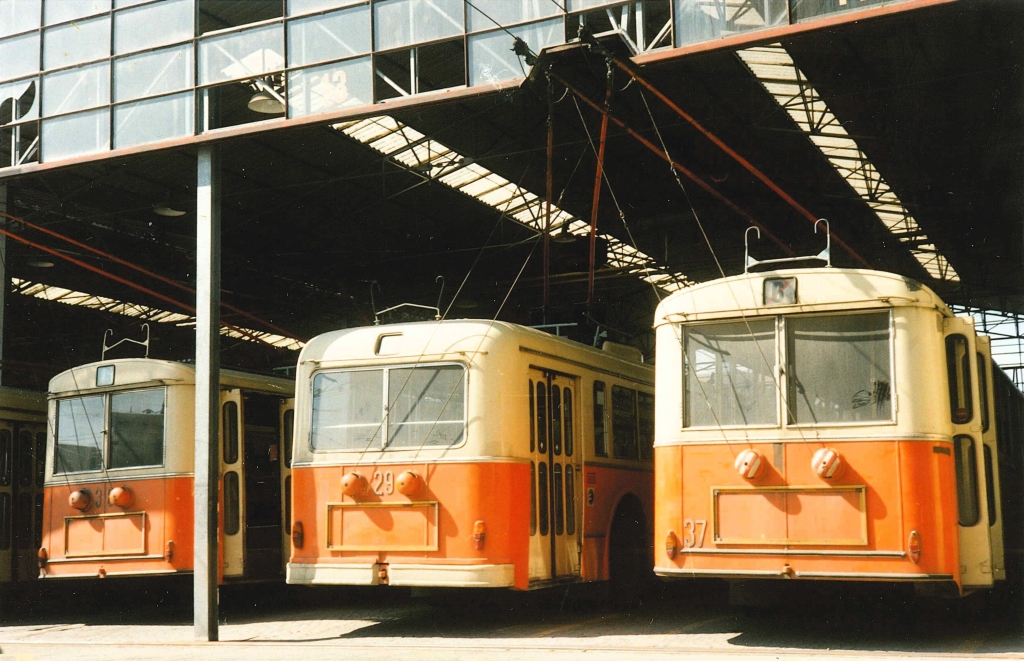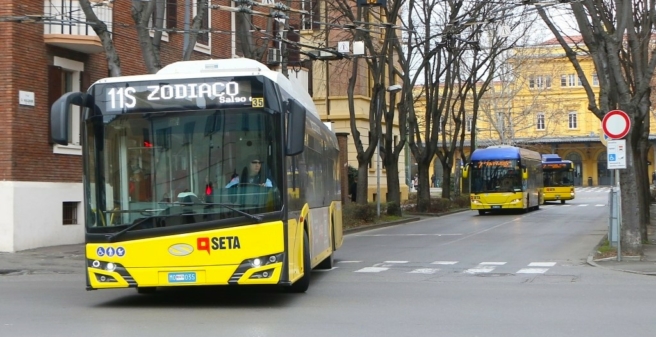
Modena in the Italian region of Emilia-Romangna is known to many as the home of the founder of the sports car brand Ferrari, with the main production site in nearby Maranello. The historic city centre with the impressive Palazzo Ducale and the cathedral is a tourist destination for many visitors.
SETA – Società Emiliana Transporti Autofiloviari SpA – organises public transport for the 185,000 inhabitants of the city and several more in the surrounding area. Its name already indicates that things are “electric” here, as the word filobus is the Italian term for trolleybuses. They have been running here for 74 years, as the new means of transport gradually replaced the tram. In the sixties and seventies, the network was reduced, diesel buses seemed cheaper and therefore the (transport) means of choice. But two lines survived, and in 1986, after many years, new vehicles finally arrived, and towards the end of the nineties a fundamental modernisation began, which resulted in the procurement of low-floor vehicles, the conversion of the power supply to 750V= and various new lines, including a completely new line and a new depot (together with the buses).
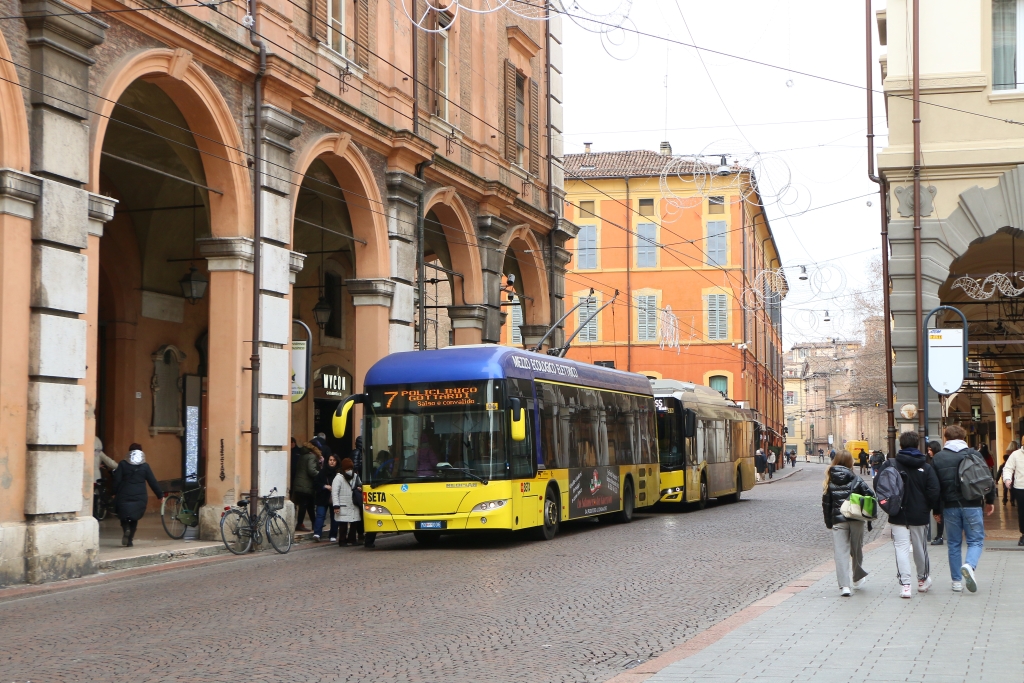
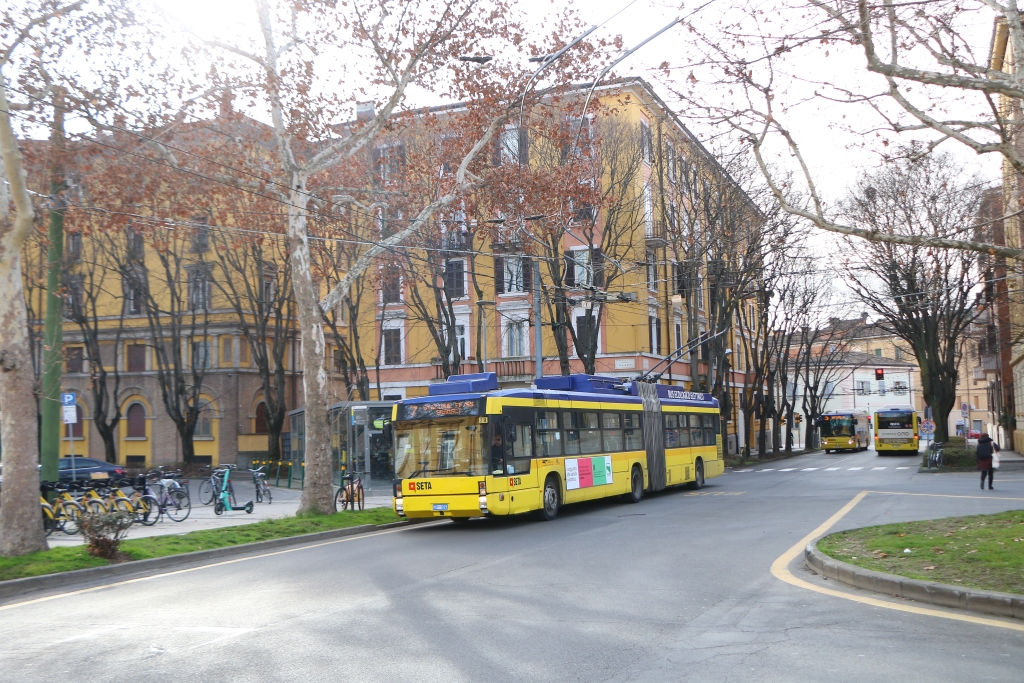
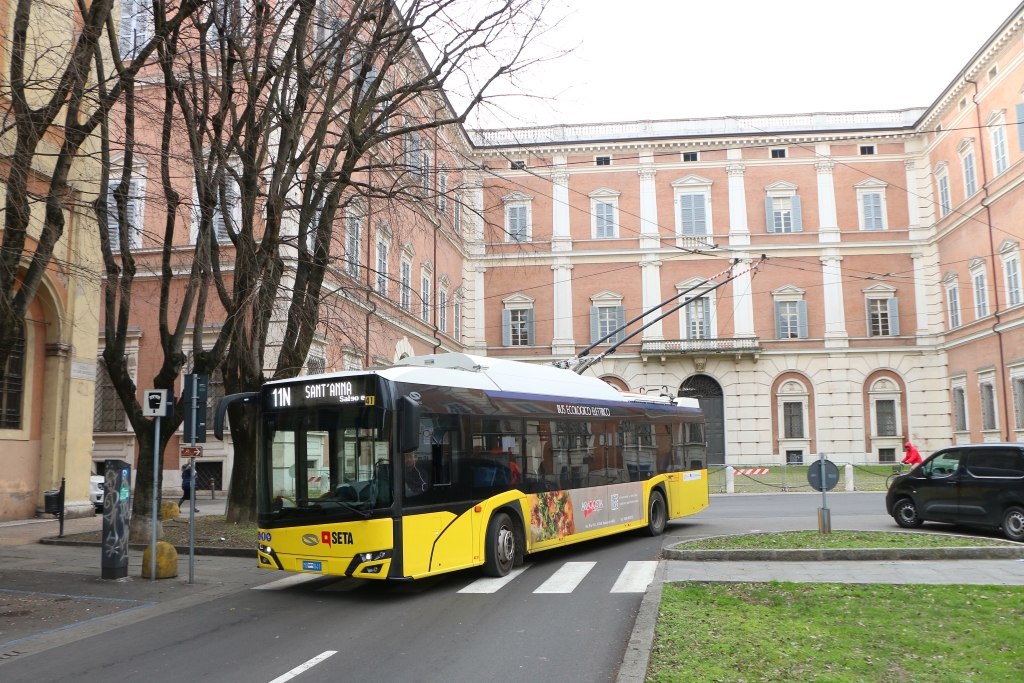
Today, these lines are electrified:
- 6: Chinici – Viale Vitorio Veneto – Autostazione
- 7: Gramsci – Stazione FS – Autostazione – Via Emilia Centro – Gottardi
- 11N: Sant’Anna – Stazione FS11 – Via Emilia Centro – Autostazione
- 11S: Stazione Fs – Via Emilia Centro – Autostazione – Zodiaco
However, line 6 is currently operated by CNG buses, which make up a large part of SETA’s remaining fleet, due to the renewal of a substation. For some time now, line 11 has been divided into two sections that overlap in the city centre – the partial lines 11N and 11S. The closure of a section of the route in the historic city centre (Corso Duomo), which was requested by politicians, is responsible for this, and line 7 had to change its route as a result, too. However, this could change again after the next regional elections in June 2024. Otherwise, the quiet, locally emission-free trolleybuses are the only ones allowed to travel through the old town, where various restrictions on private transport also apply. Electric transport can fully utilise its advantages here.
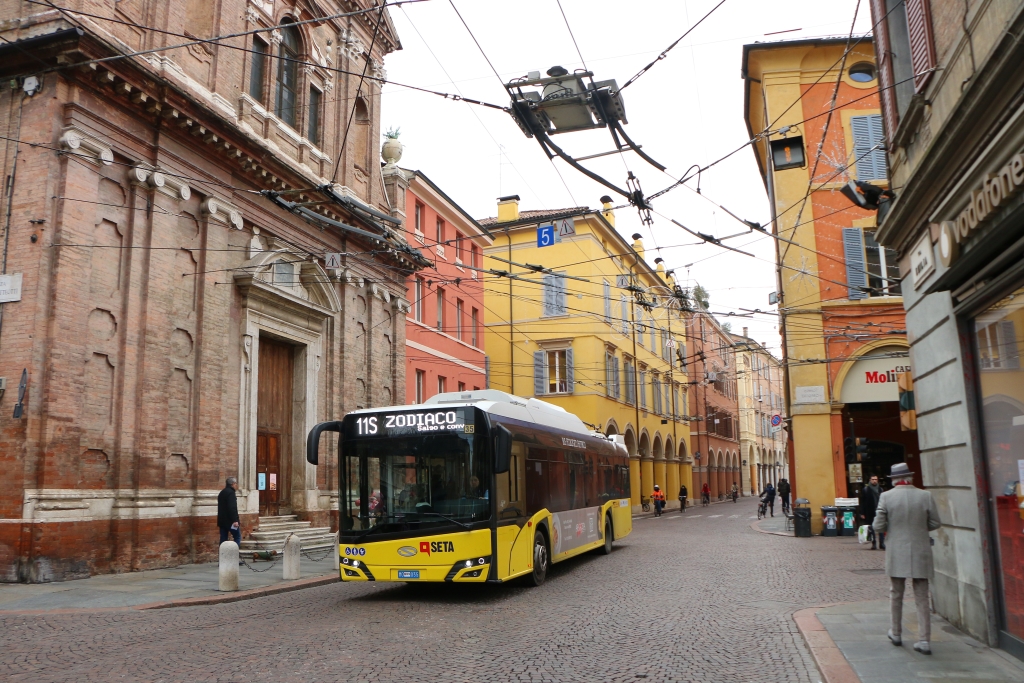
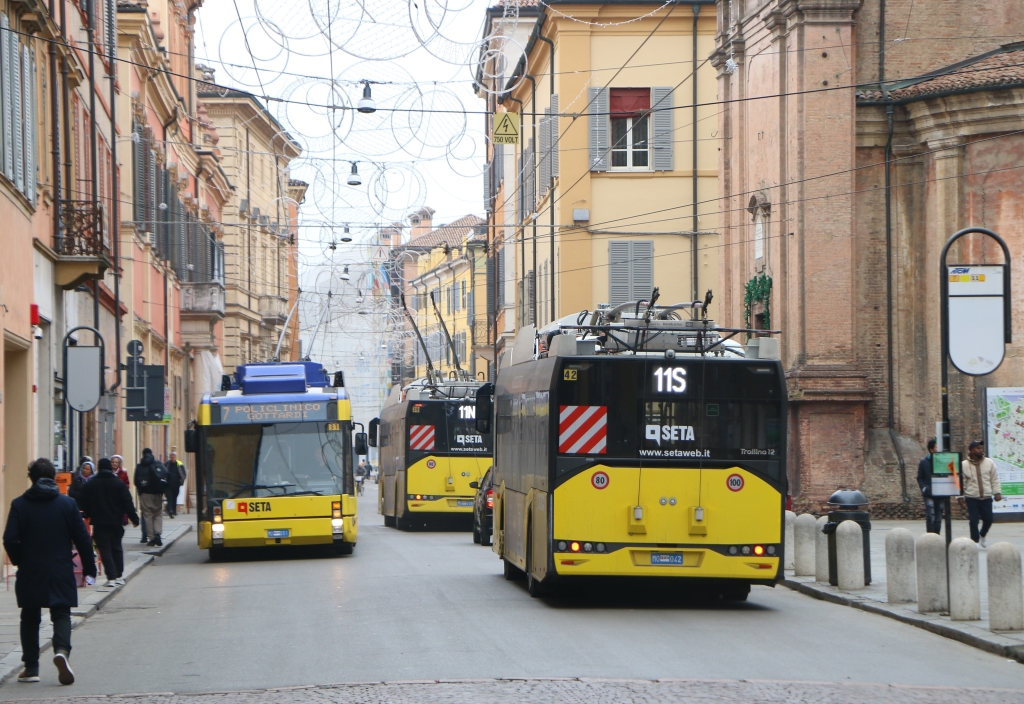
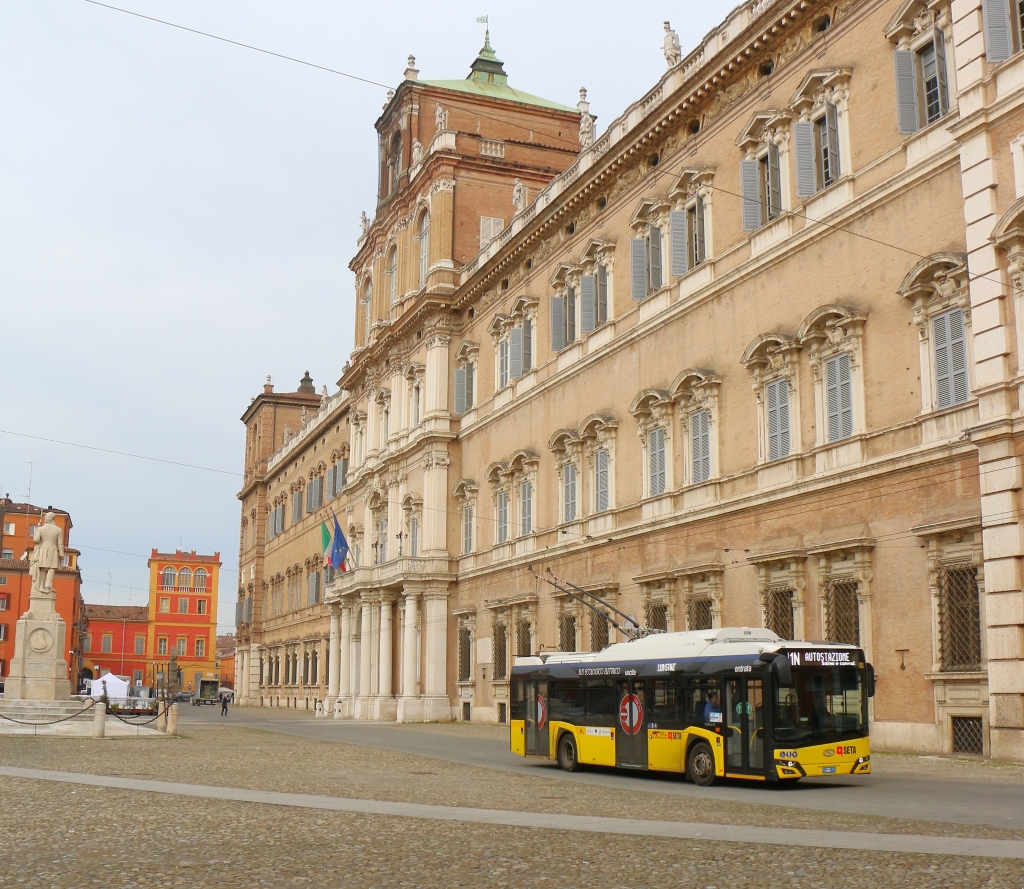
In case of necessary deviations, e.g. due to construction works, the IMC trolleybuses newly supplied in recent years with sufficiently dimensioned additional traction batteries run on individual sections. Two more such vehicles have just been delivered by Polish manufacturer Solaris Bus & Coach. Eight of these have been part of the fleet since 2020, which otherwise comprises seven two-axle Neoplan/Viseon vehicles from 2008-12 and seven of the ten MAN/Autodromo/Kiepe articulated trolleybuses built in 1999. Three vehicles from the series are already out of service, one of which has since been scrapped.
Current Trolleybus fleet:
- 01-05 Neoplan N6216/Vossloh-Kiepe, built in 2008-9
- 06-07 Viseon N6216/Vossloh-Kiepe, built in 2012
- 24-34 MAN/Autodromo “Busotto”/Kiepe, built in 1999 (no. 26 scrapped, 28/33 out of service)
- 35-42 Solaris Trollino 12/Kiepe, built in 2019/20
- 43-44 Solaris Trollino 12/Kiepe, built in 2024
- 19 Iveco/Socimi/Albiero, built in 1986 (out of service, possibly heritage trolleybus in the future)
- 33 FIAT/Cansa/CGE, built in 1959 (exposed at the depot entrance)
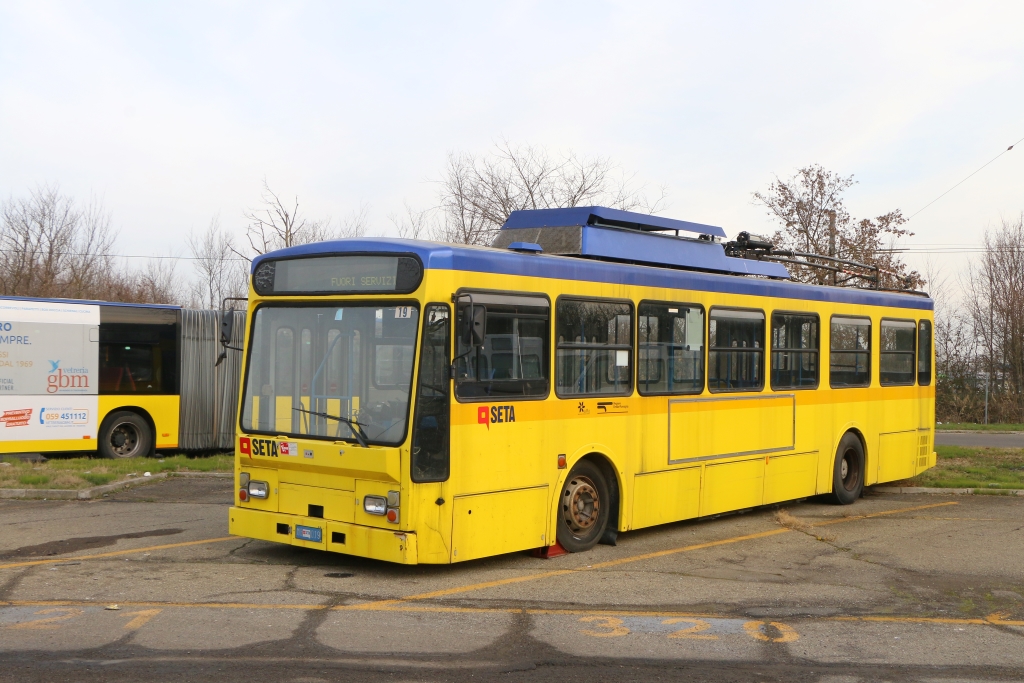
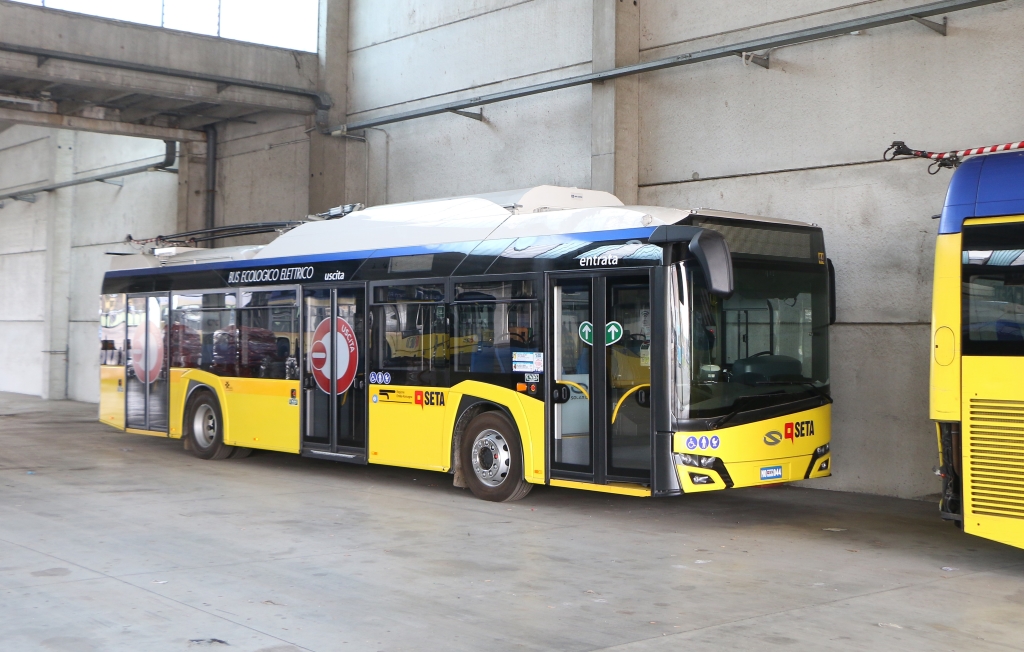

In the long run, extending electric operation to routes away without full coverage of overhead lines is one of the options for expanding emission-free transport, especially as various bus routes cover sections of the route under overhead contact line. The procurement of battery-only electric buses is also planned in Modena to replace older diesel and gas buses. The fleet includes various 15-20 year old vehicles, some of which have also come second-hand from Germany and Sweden. Some new MAN Lion’s City CNG gas-powered trolleybuses of the latest generation have also recently joined the SETA fleet.
Further current information on the Modena trolleybus can be found on the website of the trolley:motion association and in the British Trolleybus Magazine.
.
A glimpse into Modena’s trolleybus history:
